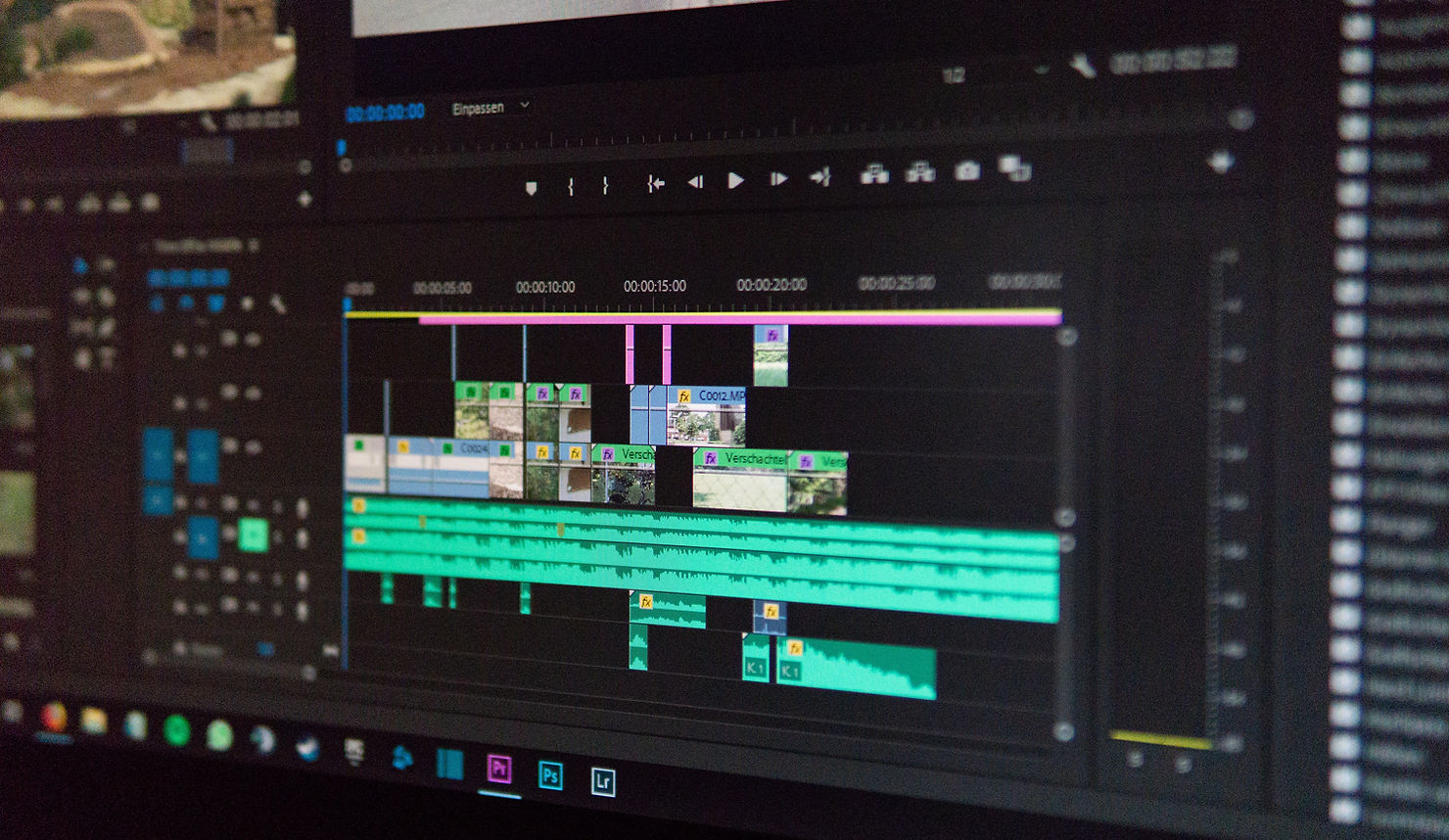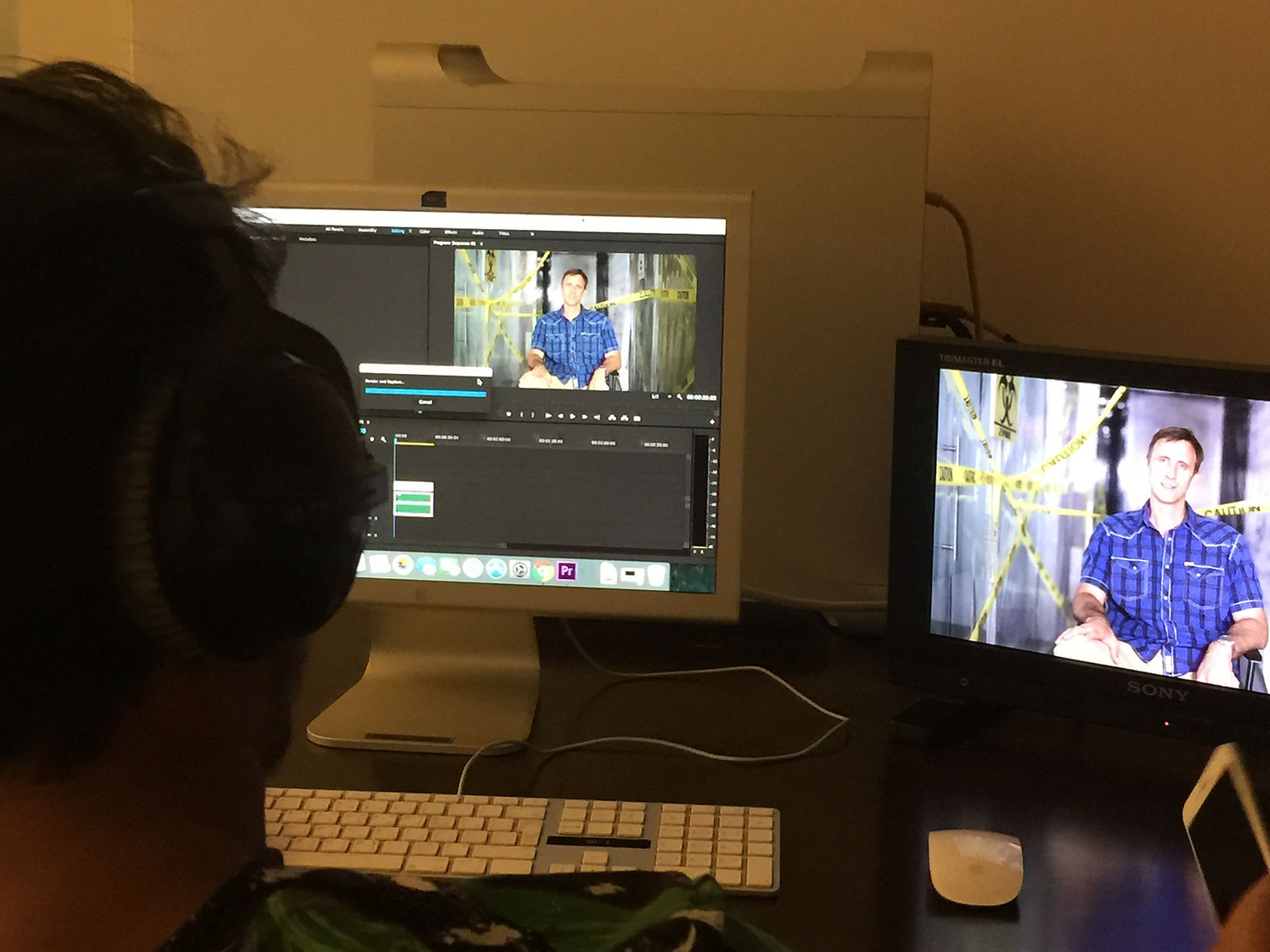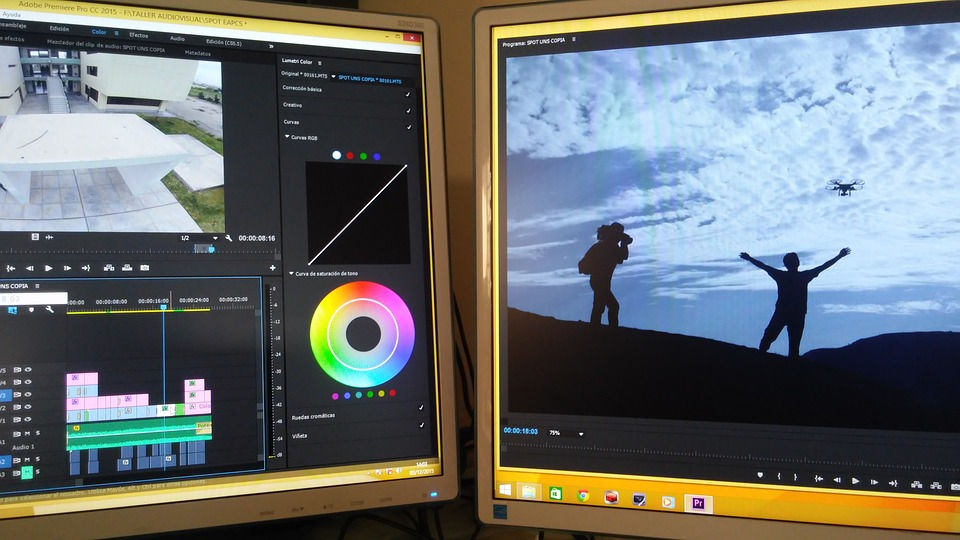It can be hard to decide where to start if you are beginning your editing journey, or whether you are a specialist looking to upgrade your preferred tools. In the video editing software game, there are several big players, each with a dedicated user base that will tell you what their choice is best.
Ultimately, the editing software you choose should be down to what you wish to achieve. Today we look closely at DaVinci Resolve vs Premiere Pro to help you make an informed choice.
The Review – DaVinci Resolve vs Premiere Pro

Pricing
When considering your software editing budget, you should take into account the difference in terms of payment.
Adobe Premiere Pro uses a distribution and price model based on software as a service (SaaS). The SaaS model means that the program can be accessed and downloaded via a cloud service, and has to be paid by monthly subscription. Premiere’s rate each month is $20.99, or a $239.88 subsidized yearly charge. The recurring fee could be a deal-breaker if you are aware of spending.
However, DaVinci Resolve’s standard version is completely free and will be ready to use once downloaded. The free version has many advanced features, with the upgraded Studio edition costs $299. It is a one-off charge and ensures all potential updates are free afterwards.
A one-off payment in the long term is, without a doubt, an advantage to use Resolve. However, if you incorporate any of the other Adobe Artistic Software offerings with your contract, there is theoretically more interest in the monthly bill.
Platform
Premiere and Resolve are available on users of all Mac and Windows PCs. If you happen to be a Linux user, there is DaVinci on that site as well. So in that sense, most editors should be able to use one or both of them on their chosen operating system.
Timeline

The Star timeline is a classic non-linear space, allowing you to arrange clips in any order of location, without restrictions. Therefore, it is not necessary to work to a specific, default workflow to put together your shots.
In Resolve, this is much the same, which also offers a new Cut Page featuring tools to produce edits more quickly within a streamlined interface. For editors working under short deadlines that need to deliver fast results, such as news coverage, this will be an excellent choice.
Stability
As an editor, you also require guidance and assistance with software-related technological problems. Given its success and large user base, Premiere Pro CC is the subject of several online community groups and web-sites.
The makers of DaVinci Resolve, Blackmagic Design, host a well-indexed number of support pages on their web site. However, DaVinci also has an having online community forum, customer service through phone, email and online support. Given that they also produce cameras and physical editing equipment, it makes sense that they would provide filmmakers with comprehensive support in their choice of hardware and software products.
Features
Colour correction

DaVinci Resolve began life as dedicated software for colour grading before introducing more offline and online editing functionality. Meaning, hands-down, it has more professional resources for precise and intricate colour correction or creative gradation.
Blackmagic even produces physical desk hardware that allows fingertip, hands-on control of the grading process. The scope of these resources, however, can be daunting, and beyond individual editors’ needs. It is especially true if you are working with footage that does not have the resolution or bit-depth to be exploited through the options for in-depth grading.
On the other hand, Premiere has more familiar-looking software in its dedicated workspace to manipulate colours. If you have experience with photo editing software, these might be easier to pick-up.
Both programs will allow for the placement of corrections and layers of effects on individual clips or on entire timelines.
Motion Graphics
Now that DaVinci has Fusion incorporated in it, you could create some pretty excellent and advanced motion graphics. Being an Adobe product, Premiere Pro uses many of the After Effects features for its movement graphics functions. However, for more intense motion graphics, you will have to move to After Effects.
DaVinci’s abilities in motion graphics are more critical in scope than Premiere Pro. You would probably need both Premiere and After Effects to get the Adobe software to match those capabilities. While DaVinci can technically do what two Adobe programs can do, for the first-time video editors, it is nowhere near as user-friendly. Even seasoned professionals may have trouble making the change to DaVinci.
Audio
The audio editing in both Premiere and DaVinci is relatively straightforward. To help you build your soundscapes, you’ll have access to all the tools you need to edit and effect dialogue, add music and a sound library.
Premiere also ties directly to Audition allowing further flexibility of the sound design.
Multicam
Both Premiere and DaVinci offer a Multicam solution, with a simple interface and audio synchronization.
While multi-cam editing is generally the same from software to software, user feedback indicates that the most stable workflow for Premiere is the Multicam. When using a large number of synced clips, DaVinci has some problems.
Performance

Export Rendering Options
As regards export file choices, Premiere has an advantage with a more comprehensive range of export options and presets via Adobe Media Encoder. DaVinci Resolve 16 features a new Quick Export feature, allowing for smooth Vimeo and YouTube outputs.
Minimum System Requirements
The primary computer power level at Premiere is fairly standard if you have a video editing system: 8 GB of RAM and 4 GB of GPU VRAM from your graphics card. Premiere will also require 8 GB of hard disk space to install.
Blackmagic has a slightly different approach to recommended hardware. They offer full setup guides recommending Mac and PC options across desktop and laptop models. The assumption is that Resolve will be of use as part of a professional editing studio setup. Still, if you stick to the specifications, they suggest you don’t have to go all-out to get the benefits DaVinci Resolve has to offer.
Overall, DaVinci Resolve will require slightly more processing, RAM, and graphics card power to deliver optimum performance relative to Premiere’s needs.
Integrations
Supporting Apps
Adobe is the platform to choose if you want to expand your powers by adding animation or design to your toolkit. Premiere works seamlessly with other Adobe programs as part of the famous Creative Cloud Suite, such as After Effects, Photoshop, and Illustrator.
While being more self-contained and creativity independent, Resolve does integrate with the video review platform Frame.io. This handy function allows there to be comments and collaboration within the editing application, synced to the online platform of Frame.
Plugins
For both pieces of apps, third-party plugins are available, including some outstanding scoring and audio effects. The use of the Essential panels in Premiere offers a wealth of functions in motion graphics, of which thousands of templates are available for download online.
Group Collaboration
When it comes to group workflow, Adobe software is top dog and me to make the process as simple as possible. Both pieces of software work well when your projects are moving between devices. Though, we must admit that it is Adobe’s cloud feature that makes it the winner here.

Conclusion
The above details will (hopefully) give you a better picture of which program best serves your needs. If you are still on the fence, let’s take the logical approach just quickly.
DaVinci Resolve is a genius piece of kit beyond doubt, and the fact that a free version exists will undoubtedly make it a winner. At the same, DaVinci will do a lot to turn you off with its high learning curve for editors just beginning.
You already need to know what you are doing as a video editor, to be able to use the software well. If you’re sold on DaVinci, making use of the drug is well worth investing in some preparation. Even a course for beginners can get you on track to in no time create stunning compositions and visual effects.
Premiere Pro is a much more user-friendly piece of software and has the Adobe has been working to make it available to newcomers. Premiere’s interface and workflow ensure you can edit in minutes, and learn the full complexity of the program over time.
When it comes to choosing between Premiere Pro and DaVinci Resolve, considering how much time you need to invest in learning the software is crucial. When you know how to edit in any way, the transition can be difficult. In the end, you can select the video editing app ideally tailored to your project needs, expertise and budget.
At Cinemagic, we believe in empowering the youth, and I certainly hope that this blog helps understand which software you should choose over another or which can perform better depending on the kind of workflow that you have. So get out there, download your preferred software and dive into the depths of post-production.

